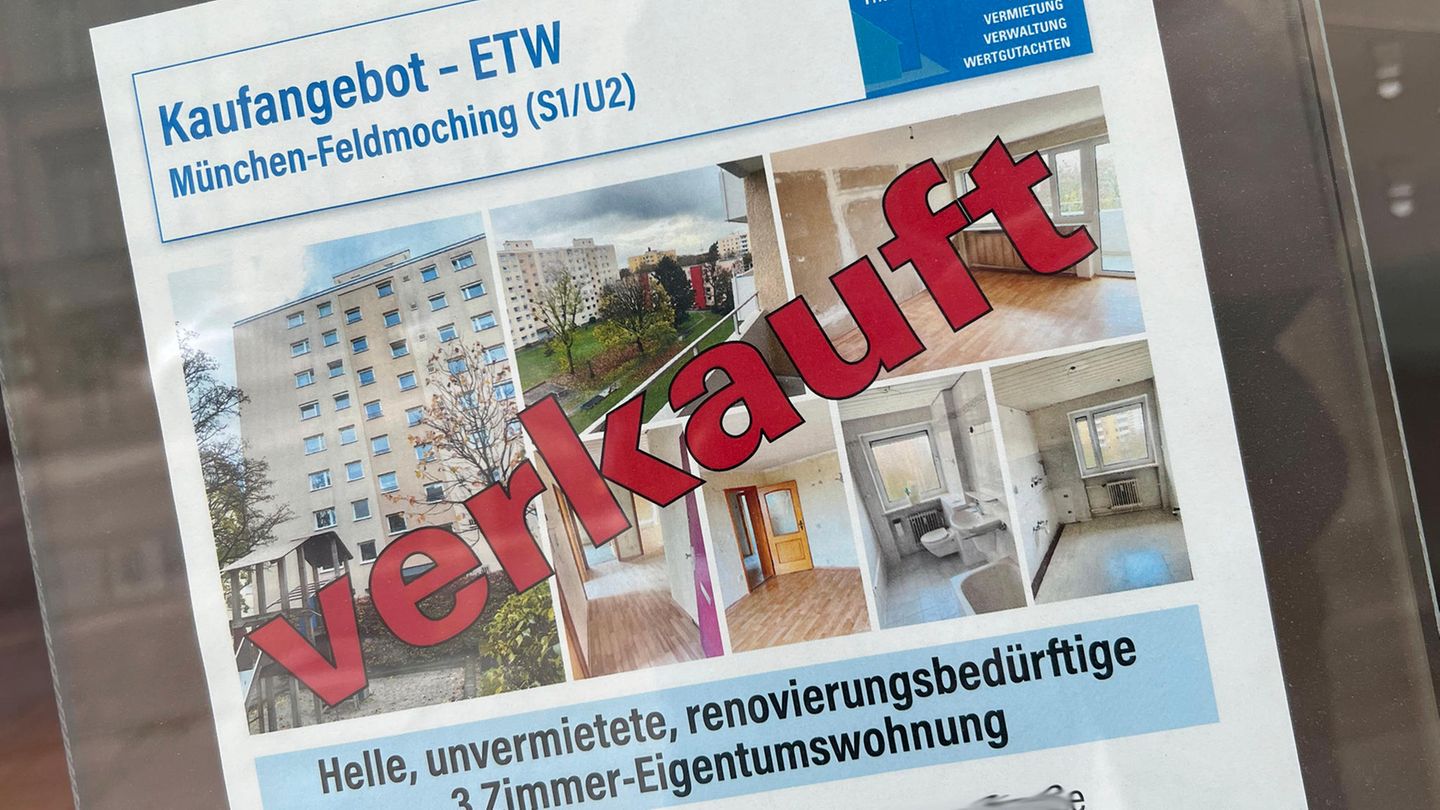The housing market is picking up again. Condominiums in major cities are particularly in demand among buyers. The demand is now greater than the supply again. For buyers, this means you should hurry up.

This is original Capital branded content. This article is available for ten days on stern.de. You will then find it again exclusively on capital.de. Capital belongs like that star to RTL Germany.
The slump on the real estate market is over, as the figures for the first quarter prove: houses and apartments sold significantly better and much faster than in the previous months. Overall demand not only increased, but it is now also greater than supply. This means: The excess inventory of properties for sale is gradually being reduced. And even slow sellers are now finding buyers again, i.e. properties that had previously been advertised for a long time. At least that was the result of an evaluation by the real estate platform Immoscout24, which compared current purchase requests with the number of advertised properties.
The evaluation also recorded how long the advertisements were online before they were taken off the market as “sold” and found: The marketing speed has increased significantly. The buyers don’t hesitate any longer and quickly come to an agreement with the sellers.
Housing markets in major cities are picking up again
From the buyer’s perspective, this also means that prices are now rising again. Real estate prices rose again in almost all metropolises except Munich and Cologne, the construction finance provider Interhyp also reported. Prices rose by around 0.3 percent in Frankfurt, Berlin and Stuttgart, and in Hamburg even by around 0.9 percent. On average, buyers are currently having their home cost around 449,000 euros. The majority of them are self-interested (70 percent). Investors are therefore still waiting.
It is also interesting to see where houses and apartments are currently being bought: in the metropolises and in their suburbs. Almost two-thirds of all nationwide apartment purchases and around half of house purchases take place in the largest cities. The other major cities only account for 14 percent of apartment purchases and 10 percent of house purchases. Apartments in rural areas are much less in demand, houses are more so. These numbers do not speak for the great escape to the countryside that many saw coming as a result of Corona and the trend towards home offices.
Houses are more likely to have a renovation backlog
It is more likely that many buyers only buy a single-family home in the country because they can no longer afford the prices in metropolitan areas. If you look at the condition of the properties, you will notice that it is mainly houses with poor energy efficiency classes that are currently changing owners:
Two-thirds of the houses sold have efficiency classes E to H. And only very few properties are rated with the good classes A or B. The price reductions have recently been highest for such properties with a renovation backlog, especially if they are located in a rural area. Here, compared to the high prices at the peak of the boom, you could get one or two bargains, but this will probably be put into perspective again in the coming years due to the corresponding renovation costs.
insolvency
Lost Benko Places: These Signa properties are degenerating into investment ruins
Apartments are in better shape from an energy perspective
The majority of condominiums sold, on the other hand – which tend to be located in large cities – are considerably better positioned in terms of energy: half of the apartments have a medium energy class (C or D), which is a clear difference to the condition of the houses sold. A further 28 percent of the apartments are in class E or F. The renovation costs here are likely to be relatively lower.
In order to still be able to afford apartments in the big cities, many buyers apparently cut back on the size: two- to three-room apartments with 50 to 80 square meters are currently the most frequently brokered properties, accounting for 41 percent of the units sold. A further 22 percent of the condominiums brokered are 80 to 100 square meters in size.
Buyers are financing more and more daringly
And it doesn’t seem as if the buyers can easily afford the sums called for. Or as if sharp increases in wages had triggered the current surge in demand on the market. Because it is certainly noticeable that first-time buyers are currently financing their properties in an increasingly risky manner: the loan amount is still around 300,000 euros, so it is relatively high. But the loan-to-value ratio – i.e. the share of the loan in the property value – has reached a record high. Buyers currently have to finance around 89 percent of the purchase price with a bank loan because they do not have any more equity.
In contrast, the repayment rate has fallen to a low level, as recently seen in 2011. Buyers only choose an initial repayment of 1.65 percent on average. This keeps the monthly rate small and, with a loan interest rate of just under 3.4 percent, means a repayment of around 1,250 euros per month for the ten-year term (the average buyer currently chooses). But in ten years, when the loan expires, the remaining debt will still be a remarkable 240.00 euros. If the interest rate remained the same, the loan would only be repaid in 33 years.
… this would be better:
If you can afford a moderately higher rate of an additional 100 euros, namely 1365 euros, you should finance it like this: take out the contract with a fixed interest rate of 15 years. This results in an interest rate that is only slightly higher at 3.5 percent, but the remaining debt is much clearer at 180,000 euros, which greatly minimizes the risk of follow-up financing. And the time it takes to become debt-free is shortened to 29 years. That would be the better deal – provided you manage to be quick enough and get the contract for the desired property.
Source: Stern




